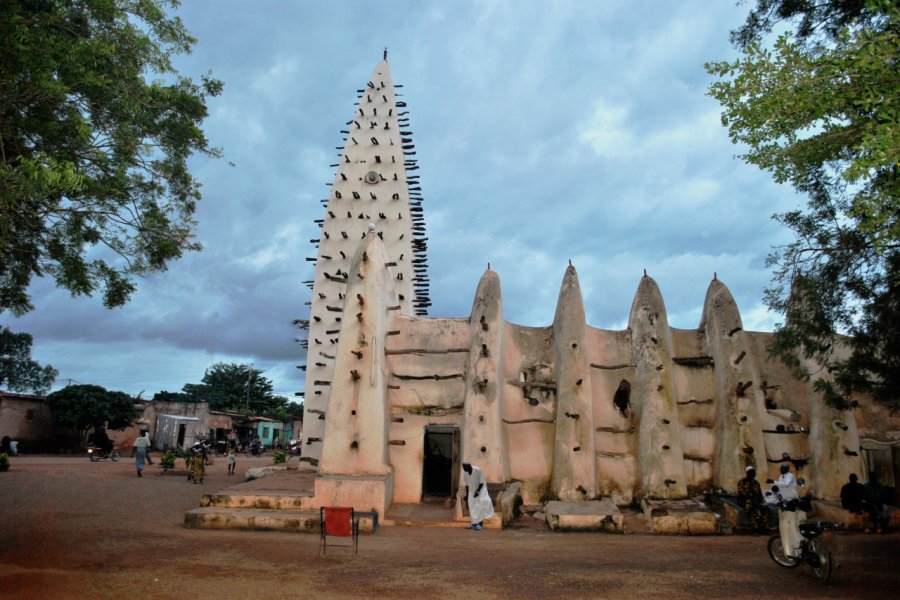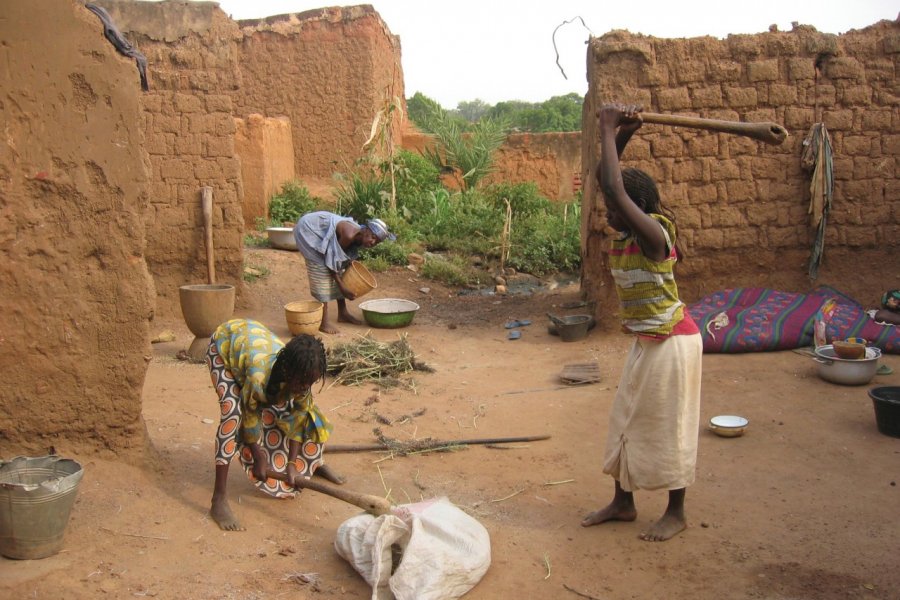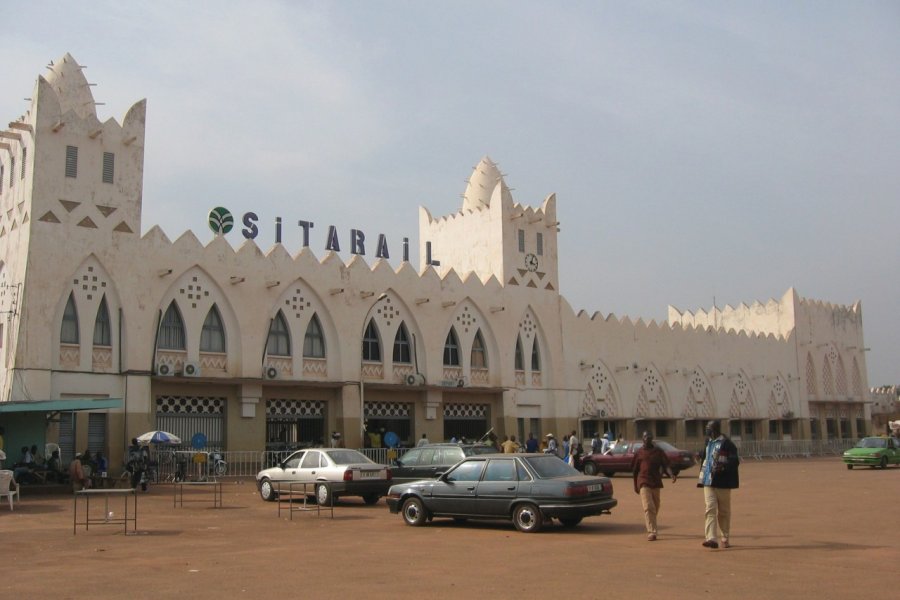Travel Guide Bobo-Dioulasso
Find an accommodation
Advertising
Second city and economic lung of Burkina Faso (the Bobo region is populated by a little more than 1.2 million inhabitants in 2017), capital of the Hauts-Bassins region, the Houet province, Bobo-Dioulasso is also considered as the other cultural capital of the country, it is notably the headquarters of the National Week of Culture (SNC). As an undeniable artistic centre, the city is marked by an extraordinary creative vitality that is expressed both through crafts and music, as well as during traditional ceremonies such as the release of masks that mark the life of the city's districts. Bobo-Dioulasso attracts many artists from the country but also from the whole West African region. In addition, despite its strong economic activity, the so-called Bobo retains a tranquility, freshness and sweetness of life that often seduces travellers who find it more pleasant than Ouagadougou. The Bobolais, its inhabitants, generally show a great openness towards foreigners, wishing to share with them the charms of the city. It often happens that an express passage to Bobo-Dioulasso lasts a few days, an encounter leading to another... As a direct consequence of his artistic life, Bobo is also known for his noctambulism. As soon as night falls, an incomparable festive atmosphere takes hold of the city, an eternal teenager whose night outings are surely the longest in Burkina Faso.All these attractions, as well as the region's sights and natural sites, make Bobo a must for any stay in the West of the country. A minimum of 3 days is recommended to discover the city and its surroundings. A place particularly appreciated by backpack travellers, Bobo is an ideal base to meet good guides and prepare your trip. Some people fall in love with the city and return to it for a while or spend extended periods of time there. The city certainly offers a good meeting point between Africa and the West.History. According to legend, the first Bobo man came to settle in the region with his wife a long time ago. One night, while her husband was asleep, the woman was called by the geniuses who told her to stay there because she would generate a great people there. Thus the husband agreed to stay on this land and planted his sword and named it Timina. The daughter of the last patriarch, known for her generosity, was often visited by the inhabitants. The place where she lived then took her name: Sya. Later, the city of Sya was conquered by Farama Ouattara from Kong (former Dioula kingdom in northern Côte d'Ivoire), which gave the city's second ethnic group its name: the Dioulas. In 1886, the French who then occupied Sya named it Bobo-Dioulasso, in reference to the two large groups that coexisted in the city (so meaning in Dioula "house of"). At the time, the city was divided into several districts. The Bobo-Fing, an animist people of farmers, and the Bobo-Dioula, most of whom were Islamized and rather warrior traders, each occupied a separate district. A third and fourth district were inhabited by the caste of blacksmiths and griots. The city owes its economic development to the French, who made Bobo-Dioulasso the capital of the Upper Volta colony. Ideally located in the region, the city made it possible to organize trade on a regional scale and send the goods produced in Upper Volta to the metropolis via the port of Abidjan. To promote this trade, in 1934, Bobo-Dioulasso was served by the railway line operated by the RAN (Régie Abidjan-Niger) from Abidjan, which was initially planned to be extended to Niamey, Niger. Another reason for this colonial settlement in the region was the mild climate. Next to the old city and around the station, the French built a vast colonial city. It has been superimposed on the old districts which, even today, still strangely coexist with the main arteries of the new city. Until the 1960s, Bobo-Dioulasso was the largest city in Burkina Faso. Today, the city is home to more than 530,000 inhabitants belonging to several ethnic groups, including the Bobos, Dioulas, Senoufos, Dykes and Siamus. The city being close to the borders of Mali, Côte d'Ivoire and Ghana, it has been able to keep some commercial activity. This is why Bobo has remained a major economic centre of the country. However, since 2002, with the arrival of Laurent Gbagbo at the head of Côte d'Ivoire, trade with that country has slowed considerably, leading to a real economic crisis in Bobo-Dioulasso. Many transport companies have had to convert to an alternative activity. In April 2011, with the change of regime in Côte d'Ivoire, a wave of hope was once again blowing. As the host city of the fiftieth anniversary of independence in December 2010, Bobo has also benefited from major renovation work, including the installation of new buildings and works of art in the main squares. Events since 2014 have seriously slowed Bobo's economy, it is "an economic capital without an economy", says the secretary general of the Houet section. In 2017, the government is working to revive a real economic dynamic in Bobo, notably with the installation of factories such as Cimasso (the largest cement plant in the country).The inhabitants of the city are the Bobolese and the Bobolese. Just as Ouagadougou is often simplified in Ouaga, Bobo-Dioulasso is commonly called Bobo.
What to visit Bobo-Dioulasso?
Advertising
Suggested addresses Bobo-Dioulasso
x 27
The best restaurants
x 34
The best hotels
x 20
The best visits
x 2
Travel agencies
x 21
The best transportation
x 17
The best outings
x 7
Sport and leisure activities
x 5
The best treats
x 2
The best care
x 14
The best stores
x 5
The best home-deco
x 16
The best services
x 2
The best events
x 1
The good plans
Weather at the moment
Advertising
Organize your trip with our partners Bobo-Dioulasso
Transportation
Book your plane tickets
Car Rental
Boat rental
Accommodation & stays
Find a hotel
Holiday rental
Find your campsite
Tailor-made trip
Immersion travel
Services / On site
Activities & visits
Find a doctor
Bobo-Dioulasso travel inspiration
Find unique Stay Offers with our Partners
Pictures and images Bobo-Dioulasso
Other destinations nearby Bobo-Dioulasso
100 km away














